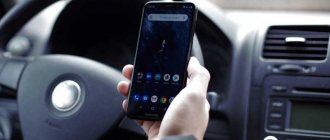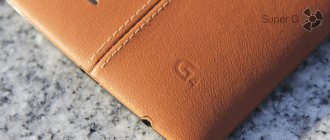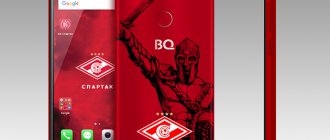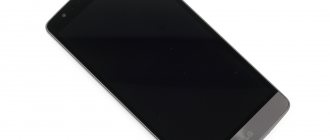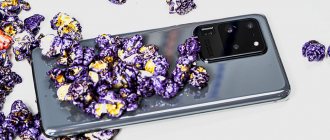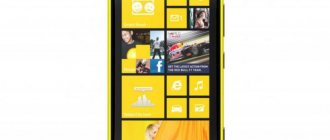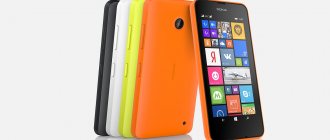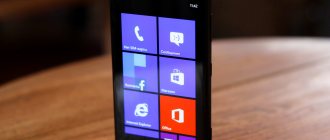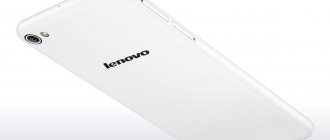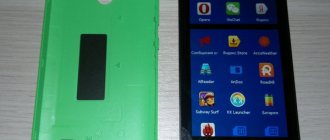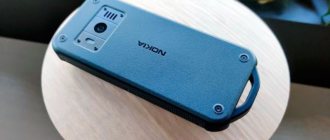Content
Nokia Lumia 800 and 710 - the first of the first
Nokia Lumia 900 and 610 - the most expensive and most affordable
Nokia Lumia 505 and 510 - two brothers in misfortune
The end of the era of Windows Phone 7
At the end of October 2020, during the WSJD Live conference, the head of Microsoft, Satya Nadella, finally tore off the curtain of uncertainty in the smartphone business, which had been transferred from Nokia. The corporation's CEO shared his thoughts on the current state of affairs in the company. Fears and rumors about the future of Windows Phone devices, which have been circulating for several months after the release of Microsoft Lumia 650, have finally been confirmed. The head of the company admitted that Microsoft had missed the smartphone market and called the Lumia line of devices erroneous - this killed the last hope of those who still believed in the revival of “tiled” gadgets under this brand.
Satya Nadella at the WSJD Live conference
After such a statement from the head, it became obvious that Microsoft had finally said goodbye to the Lumia brand, leaving behind a small layer of fans of devices on this platform. Of course, the CEO’s speech was only a statement of fact, since in 2020 manufacturers released only a couple of new smartphones running Windows 10 Mobile, and the global share of the operating system fell below 1%. The latest smartphone running Windows 10 Mobile can be considered Wileyfox Pro, which was introduced in November 2017. Further in this article we will not talk about the future of Microsoft in the mobile OS market, but about the devices that it once created together with and without Nokia. Now I propose to look back seven and a half years ago and remember how it was.
Nokia Lumia 800 and 710 - the first of the first
Booth from the presentation of Lumia 800 and 710
The first two Windows Phone devices - Lumia 800 and Lumia 710 - were presented in October 2011 at the Nokia World conference. They were representatives of the high (NL 800) and middle (NL 710) classes. A month later, unusual Nokia devices running Windows Phone, united by a new brand, began their march around the world. The first countries in which the gadgets went on sale were France, Germany, Italy, the Netherlands, Spain and the UK. These were devices running the closed Windows Phone 7.5 Mango operating system. The operating system interface design was called Metro UI. Microsoft's platform was something new and unusual on the market at that time: instead of the usual application icons, it used a start screen with tiles. In this version, rows of two medium tiles or one large tile could be made. Also, swiping left opened a list of all applications called Fast Lane. Nokia Lumia 800 almost completely copied the design of the case, with the exception of small details, from the Nokia N9, which was released earlier and ran on the unusual “gesture” operating system MeeGo, which Nokia decided to abandon. This was done on the terms of cooperation between Nokia and Microsoft in favor of a fresh OS that seemed to Nokia management to be more promising.
In favor of Windows Phone, Stephen Elop, Nokia's CEO at the time, sent a letter to company employees announcing the end of support for MeeGo. This move was made in secrecy, even before the release of the first commercial device on this OS. In response to this, the team working on MeeGo subsequently left Nokia and founded their own company to develop Sailfish OS, another mobile operating system quite similar to MeeGo. This digression was some background before the development of Nokia Lumia 800 - Nokia's first flagship on a new operating system.
Nokia N9
The monolithic body of the Lumia 800 was made of polycarbonate plastic. Its design concept and body material have been used by Nokia to release new devices for several years. The first flagship of the Finnish manufacturer ran on Qualcomm Snapdragon MSM 8255 with a single Scorpion core at 1.4 GHz and an Adreno 205 graphics accelerator. The smartphone also had 512 MB of RAM and 16 GB of internal memory without expandability. Across the entire Lumia line, WP 7 offered 25 GB of SkyDrive cloud storage instead of memory cards. The screen was made using AMOLED technology and its diagonal was 3.7 inches. Nokia added its exclusive development to the device, which at that time was already used in some of its Symbian smartphones and Nokia N9 - the ClearBlack polarization layer. The screen had WVGA resolution and three capacitive touch control keys. The camera in the Nokia Lumia 800 was 8-megapixel, with an f/2.2 aperture and Carl Zeiss optics with a wide-angle lens, autofocus and dual LED flash. Other specs included: Wi-Fi 801.2 b/g/n, Bluetooth 2.1 and GPS. The battery capacity was larger than that of the Nokia Lumia 710 - 1450 mAh.
Nokia Lumia 800
In Russia, the device went on sale in December 2011 at a price of ~21 thousand rubles. It was available in three colors: black, fuchsia and blue, to which white was later added.
There was also an operator version of this smartphone. In April 2012, the famous Chinese operator China Telecom began selling Nokia Lumia 800C, the characteristics of which were close to the original smartphone. The exception was the built-in CDMA module against GSM in the international version of the smartphone. The price of the non-operator-locked product was 3,600 yuan or $570.
Nokia Lumia 800
Nokia Lumia 710 looked much more modest than its “big brother” and had more modest characteristics. It used the same processor and the same amount of RAM as the older model. But the smartphone was equipped with a simpler 3.7-inch TFT touch display with WVGA resolution, a 5-megapixel camera with LED flash, 8 GB of internal memory without expansion, a 1300 mAh battery, and Wi-Fi 801.2 b wireless modules /g/n, Bluetooth 2.1 and GPS.
It was available in black and white, but had interchangeable color panels (pink, blue, yellow, black, white). In Russia, NL 710 went on sale in December 2011 (simultaneously with NL 800) at a cost of about 13.5 thousand rubles.
Nokia Lumia 710
Both mobile devices found a response among buyers, but the limitations of the closed system, the small number of applications at launch, as well as the general “dampness” scared some potential buyers away from these smartphones. They were comparatively cheaper than models from other WP device manufacturers, but still too expensive for the average person who wanted to get acquainted with new gadgets. Nokia understood this and was already preparing two models from other segments, giving rise to new index designations that could be used to understand which class the device belongs to.
Current models with photos and prices
This table shows Nokia Lumia phones with photos and prices, which can be purchased in the official Microsoft store.
To view a review of a phone, click on its name in the first column.
To view a photo, click on its thumbnail.
| Model | SIM modifications (quantity) and 4G availability | Characteristics | Photo | Price in rubles |
| Microsoft Lumia 550 | 1. with one + 4G |
| 6 990 | |
| Microsoft Lumia 535 | 1. with two |
| 7 490 | |
| Microsoft Lumia 640 | 1. with two 2. with one + 4G 3. with two + 4G |
| 1. 9 990 2. 9 990 3. 10 990 | |
| Microsoft Lumia 540 | 1. with two |
| 8 990 | |
| Nokia Lumia 635 | 1. with one + 4G |
| 8 690 | |
| Nokia Lumia 730 | 1. with two |
| 9 990 | |
| Microsoft Lumia 650 | 1. with one + 4G 2. with two + 4G |
| 1. 10 400 2. 11 000 | |
| Microsoft Lumia 950 | 1. with two + 4G |
| 29 990 | |
| Microsoft Lumia 950XL | 1. with two + 4G |
| 36 990 |
Nokia Lumia 900 and 610 - the most expensive and most affordable
Nokia did not stop there and began to fill the previously empty niches of the high-end and budget segments. So, two new devices were soon presented: Nokia Lumia 900 and Nokia Lumia 610. Nokia Lumia 900 was presented in January 2012 at the Consumer Electronics Show 2012, and Nokia Lumia 610 in February at Mobile World Congress 2012.
The older model did not receive any major updates and ran on Windows Phone 7.5 Mango. The Lumia 900 became an enlarged and improved copy of the Lumia 800. Its differences in design from the cheaper flagship lay in the increased dimensions of the device (127.8 x 68.5 x 11.5 mm versus 116.5 x 61.2 x 12.1 mm), at which it became even slightly thinner than its predecessor, and the diagonal screen (4.3 inches vs. 3.7 inches). The weight increased from 142 to 160 grams, and a higher capacity battery appeared - 1840 mAh. The main rear camera in the 900 model differed from that in the NL 800 in improved focus and color balancing. There was a front camera with a resolution of 1 megapixel, which was not present in the Lumia 800, as well as 4G support. Lumia 900 became the first Nokia smartphone to receive LTE support. The display matrix was also different. It was made using Super AMOLED technology, and the screen was protected by first generation Gorilla Glass. In terms of hardware characteristics, the smartphone was no different from the Lumia 800. Memory card support did not appear. The gadget had the same body colors as its younger brother Lumia 800.
In Russia, the smartphone went on sale in June 2012 at a price of about 25 thousand rubles.
Nokia Lumia 900
The second model, based on the 600 index, was intended for those who would like to try out the new “tile” ecosystem, but did not want to spend a large amount of money on it. Nokia presented a budget smartphone running an already updated version of Windows Phone 7.5 Refresh. The characteristics of the smartphone were even more affordable than those of the Lumia 710: a 3.7-inch TFT screen with WVGA resolution, a single-core Qualcomm Snapdragon S1 7227A processor with a frequency of 800 MHz and an Adreno 200 graphics accelerator, 256 MB of RAM, 8 GB of ROM not expandable, 5 megapixel camera with autofocus and Carl Zeiss optics, Wi-Fi 801.2 b/g/n, Bluetooth 2.1, GPS, 1300 mAh battery. The smartphone was available in black, white, blue and fuchsia colors.
The main disadvantages of the smartphone were the limited amount of RAM, in which background tasks using more than 90 MB of RAM were automatically disabled, and some applications could not start. However, the Lumia 610 had a functional feature that was not originally present in the older Lumia 710 and 800 models presented earlier. It could work in hotspot mode.
The smartphone went on sale in the 2nd quarter of 2012 at a price of 190 euros. Sales in Russia began in May 2012. Its cost was about 10 thousand rubles.
Nokia Lumia 610
There were also operator versions of this model. The Nokia Lumia 610C was a version of the Lumia 610 for the Chinese telecom operator China Telecom. The difference from the original lay in the communication module - CDMA, and not the usual GSM.
The second Lumia 610 NFC was presented at the WIMA 2012 conference. The device debuted with the Orange operator. Using NFC, it was possible to read tags, connect NFC accessories, and pay for travel. Contactless payments were made using MasterCard PayPass or Visa payWave technologies.
Review of the Nokia Lumia 1320 windows smartphone: six inches, five megapixels
Table of contents
- Introduction
- Specifications
- Packaging and equipment
- Appearance and design
- Display
- Software and firmware
- Hardware platform and performance
- Multimedia
- Wireless Interfaces and Communications
- Navigation
- Memory
- Battery life
- Camera
- Comparison with competitors
- Conclusion
- Additional photos
Introduction
Competitors in the digital world have long tried to outdo each other in various ways.
And it's not just about smartphones. It’s worth remembering at least digital cameras, which before our eyes have grown from a resolution of 6 megapixels to 20 megapixels and more. And then, when the shooting resolution could no longer be surprising, a new fashion appeared - to create point-and-shoot cameras with a gigantic zoom. As a result, compact cameras have learned to zoom in ten or even twenty times. The fashion for large displays was brought to the world of smartphones by the Samsung Galaxy Note with a 5.3″ screen, which seemed simply a giant among its competitors. However, progress does not stand still, and even a child cannot be surprised by such a diagonal. But smartphones with a six-inch display have forced users to divide into two camps: those who love them and those who hate them. It’s not for nothing that they quickly came up with the name “tablet phone” and separated it into a separate market segment, because these gadgets have clearly grown out of smartphones, but they still don’t reach the level of a tablet.
Of course, the Windows device segment could not let this format go unnoticed, and the absolute flagship Lumia 1520 is entering the market, and a lightweight version numbered 1320 is presented in tandem with it.
This model was announced on October 22, 2013 and turned out to be the penultimate one released with the Windows Phone 8 operating system. Soon, new items began to be equipped out of the box with Windows Phone 8.1 with proprietary Lumia Cyan firmware.
announcements and advertising
2080 Super Gigabyte Gaming OC for 60 rubles.
Compeo.ru - the right comp store without any tricks
RTX 2060 becomes cheaper before the arrival of 3xxx
Ryzen 4000
series included in computers already in Citylink
The price of MSI RTX 2070 has collapsed after the announcement of RTX 3xxx
Core i9 10 series is half the price of the same 9 series
The price of memory has been halved in Regard - it’s more expensive everywhere
Specifications
| Device type | Smartphone |
| Model | Nokia Lumia 1320 |
| CPU | Qualcomm Snapdragon 400, 1.7 GHz, Dual core |
| Video processor | Adreno 305 |
| operating system | Windows Phone 8 (Lumia Black)/Windows Phone 8.1 (Lumia Cyan) |
| Memory, GB | 1 RAM, 8 ROM |
| Screen | IPS 6.0″, 1280 x 720 |
| Cameras, Mpix | 5.0 + 0.3 |
| Net | GSM 850, 900, 1800, 1900; W-CDMA 850, 900, 2100; LTE BC3, BC7, BC20 |
| Number of SIM cards, pcs. | 1, Micro-SIM |
| MicroSD support | Yes, up to 64 GB |
| Data transfer | GPRS, EDGE, 3G, LTE, Wi-Fi (a/b/g/n), Bluetooth 4.0 |
| GPS/aGPS/GLONASS | Is/is/is |
| Battery, mAh | Li-ion, 3400 |
| Dimensions, mm | 85.9 x 164.2 x 9.8 |
| Weight, g | 220 |
| price, rub. | ~9 000/~11 000* |
*Grey/white market.
At first glance, everything is at a good level, the only thing missing is the NFC antenna. So what is it? A budget phone with a big screen or a real “tablet phone”? Let's figure it out in order. And we will start with the packaging and delivery set of the device.
Packaging and equipment
The smartphone comes in a medium-sized box, the external design of which is fully consistent with all other models in this line. Here you can see that the Lumia 1320 model is available in different colors: black, white, yellow and orange. We got the orange version.
The screen of one of the smartphones shows a map of the city, as if hinting at the navigation capabilities of the device.
The label contains service information, such as an imei code and a certification mark in Russia, and even contains the production date of a specific device. For example, our copy was released on February 18, 2014.
The box is pleasant to the touch, although subjectively it does not leave as impressive an impression as the packaging of the Lumia 925.
We pull the cardboard strap and a box comes out of the cover. The smartphone itself rests on a special cardboard stand, wrapped in protective film, and lies very tightly in the box.
If you look below, behind the cardboard cover we will find the entire delivery set.
Nokia Lumia 1320 kit:
- Power adapter;
- Micro-USB cable;
- Headset WH-108.
The first shock for me was the absence of a paperclip for removing the SIM card tray in the package. And only after examining the device it became clear that it is not needed here, since the connector is located under a removable cover.
It is worth noting that the headset included in the kit is extremely simple and is only suitable for listening to the radio.
So, in terms of packaging and configuration, everything is completely ordinary. Nothing stands out for its special care in manufacturing or selection of materials, but there is nothing to be ashamed of - the box easily copes with its direct tasks, and the delivery meets the minimum requirements. Although the headset could have been better, since they decided to add it at all.
Appearance and design
After the first meeting with a smartphone, it was difficult to part with the thought that I had already encountered such a design. Indeed, the Lumia 625 model is, in fact, an absolute analogue, with a reduced screen diagonal. Only the flash is now on top.
I propose to compare the dimensions and appearance of the review hero with the Huawei MediaPad X1 tablet with a 7.0″ display and the Nokia Lumia 925 smartphone with a 4.5″ screen.
Huawei MediaPad X1 and Nokia Lumia 1320.
Huawei MediaPad X1 and Nokia Lumia 1320.
Nokia Lumia 925 and Lumia 1320.
Nokia Lumia 925 and Lumia 1320.
The device is assembled quite well, the lid stays in place quite tightly. But when pressed, it noticeably bends and creaks; the body clearly lacks rigidity.
Under the cover we find only slots for a MicroSD and micro-SIM memory card.
There is no removable battery provided.
The back cover, made of polycarbonate, also fits the side edges of the device.
The front of the device always remains black, and if you want to change the color of your smartphone, all you need to do is change the cover.
By the way, the side buttons are also located on it and are made in the color of the body.
No matter how hard you try, you won’t be able to find a single right angle – they are all made rounded, so the device doesn’t cut into your hand even with a very strong grip.
The front side is completely covered with Gorilla Glass 3 and resists mechanical stress very well.
During testing, the smartphone retained its original appearance.
On the top edge of the glass you can see a small slot for the earpiece; a little to the right of it are the proximity and light sensors, and the front camera peephole.
The screen occupies a central position and is equipped with very average frames on the sides. Below, under the display, you can find only three classic keys: “Back”, “Home” and “Search”. The buttons are touch sensitive and are not backlit.
However, they are spaced far apart and have a large sensor area; it will be quite difficult to make a mistake in the dark.
The entire front side is framed by a thin plastic edge (it is black and hard to see in photographs) designed to protect the screen from rubbing on a flat surface. Not a very good engineering solution, since it is quite thin and simply cuts into the skin.
At the back we find a five-megapixel camera window with LED flash. The Nokia logo is placed in the center.
In orange, it is made so dimly that it is even difficult to see in photographs.
At the bottom is a ridiculously small opening for the main speaker, equipped with two stops to prevent muffling of sound on a smooth surface - a very nice touch.
The left side is completely empty.
On the right, three mechanical buttons have found their place: volume rocker, power/lock, two-position camera key.
Some sources reported that the buttons were made of ceramic, but upon closer examination we got the impression that the most ordinary plastic was used. However, this does not affect the quality of work.
On top you can only find a standard 3.5mm headphone port.
On the bottom edge, exactly in the middle, there is a lonely micro-USB charging and synchronization connector.
By the way, it was not possible to find a hole for at least one microphone; we can only guess about the location and quantity.
The build quality can be called typical for ordinary Chinese smartphones, which have already grown out of the terrible play of the lid, but cannot get rid of small creaks. The famous Finnish (and more recently partially American) brand could take care of a better fit of parts.
Display
As mentioned earlier, the display has a diagonal of six inches and a resolution of 1280 x 720. As a result, we have a pixel density of 245 PPI. The result is very average, the squares can be easily seen with the naked eye and the small text turns into a ladder.
The matrix is built using IPS technology. The manufacturer claims the presence of proprietary ClearBlack technology, which implies the presence of a special filter. Thanks to this technology, blacks should be truly black, glare should be reduced and viewing angles wider.
However, the black here is more blue, and you can admire your reflection even while working with the device.
The white color is smooth and does not have strong color distortions. At an angle, the uniformity of illumination is slightly distorted, but this does not affect the perception.
The viewing angles are really good, no matter from which side you look, the colors will remain unchanged, there is no color inversion at all.
In general, the display leaves a positive impression, but after using the Lumia 925 with an AMOLED display, the pleasant impressions are greatly diminished. It should also be noted that when working with this screen, my eyes got tired very quickly and sometimes my head began to hurt; this was not observed with other devices.
Next, I would like to draw your attention to the results of testing the display with a colorimeter.
Colors are close to RGB, as expected. The picture looks realistic, without color shifts.
The channels are nearby - that's a plus. However, they do not go very smoothly and this can negatively affect the perception of the picture.
The dots are nearby, which means that spurious colors will be practically absent.
The colors are closer to cool shades, and the graph is not very even. However, the deviations are not so significant as to create problems in perception. In general, everything is not bad.
Although the color channels are not tuned very smoothly, especially the violet channel, the overall picture is still very acceptable and will not cause discomfort.
Brightness indicators in different modes are shown in the table below.
| Brightness level, % | White brightness, cd/m 2 | Black brightness, cd/m 2 | Contrast, x:1 |
| 100 | 523 | 0.949 | 496 |
| 75 | 309 | 0.711 | 434 |
| 50 | 200 | 0.462 | 432 |
| 25 | 50 | 0.118 | 423 |
| 0 | 25 | 0.059 | 423 |
If desired, the user can adjust the temperature and color saturation himself.
The very convenient and beloved Nokia Glance technology, which displays the time and notifications on the switched off screen, is also implemented here. However, you shouldn’t expect the same effect as on an AMOLED display - the backlight illuminates the entire screen area, and charging will be consumed much faster.
Functions such as turning on by double tapping the screen and operating with gloves have not gone away either.
By the way, the sensor is traditionally responsive and accurate. Multi-touch is capable of processing up to ten simultaneous clicks.
The frankly weak resolution for such a diagonal puts an end to both good color rendition and very wide viewing angles. But the sensor is worthy of the highest praise. The high sensitivity mode is especially pleasant for working with gloves.
Software and firmware
Out of the box, the smartphone runs the outdated Windows Phone 8 operating system with the Lumia Black firmware version. The update to Windows Phone 8.1 (Lumia Cyan) is ready, the test sample was successfully updated and tested on the latest firmware version.
Of the innovations, the most striking thing is the programmable navigation bar-curtain in the style of Android. On it we will find five quick access buttons, the purpose of which can be changed at your discretion in the settings. Notifications from all applications that receive your permission will also be collected here.
Once colored tiles have now learned to become transparent, their background changing depending on the selected image. At the same time, the tiles move as if above the wallpaper, creating a very beautiful transparency effect.
A file manager from Microsoft with the brilliant name “Files” has appeared in the application store.
The program is quite simple, but all the required functionality is present in it.
Otherwise, Windows Phone is unchanged and familiar to those who are familiar with this operating system.
According to an incomprehensible logic, it was updated earlier than the flagship model Lumia 925. It makes sense for lovers of the latest software to think about it.
Hardware platform and performance
In terms of hardware, all smartphones with Windows Phone 8 are almost identical; they all run on a dual-core chip from Qualcomm. The only exceptions are the older “tablet phone” 1520 and the recently introduced flagship Lumia 930 - they each have four cores.
In other devices, the differences are only in the processor frequency and the volume of main and RAM. As a result, the devices have similar performance in various benchmarks.
If we do not take into account the above-mentioned models, our review hero has the highest performance thanks to the increased processor frequency - up to 1.7 GHz. The benchmark results can be seen in the screenshots. I would just like to note that in practice, no differences in terms of performance from the Lumia 925 were noticed, although the performance in the tests differs.
MultiBench 2:
My Phone:
AnTuTu Benchmark:
Traditionally for Windows Phone, the smooth operation of the interface and applications is excellent. It was not possible to achieve any brakes or freezes. Even in resource-intensive games, everything works quickly, optimization is at its best.
For example, Asphalt 8 loads quickly, runs smoothly, and doesn't slow down at all.
Ultimately, we can state without any doubt the traditionally high performance; in the near future, problems are unlikely to arise even with the newest games.
Multimedia
Multimedia capabilities are provided by standard audio and video players. There are no worthwhile alternatives in the app store at the moment. However, the provided programs cope well with basic tasks.
The table below shows the video test results.
| Format | Video, sound | Standard video player |
| AVI | XviD 720×400, MP3+AC3 | OK |
| AVI | XviD 720×1280, MP3+AC3 | OK |
| MKV | H.264 1280×720, AC3 | No |
| MKV | H.264 1920×1080, AC3 | No |
Regarding the quality of sound reproduction, I suggest you familiarize yourself with the RMAA tests.
| Parameter | Result | Grade | Schedule |
| Frequency response unevenness (in the range 40 Hz - 15 kHz), dB | +0.14, -0.14 | Very good | |
| Noise level, dB (A) | -86.9 | Fine | |
| Dynamic range, dB (A) | 86.9 | Fine | |
| Harmonic distortion, % | 0.0097 | Very good | |
| Harmonic distortion + noise, dB(A) | -65.8 | Average | |
| Intermodulation distortion + noise, % | 0.096 | Fine | |
| Interpenetration of channels, dB | -87.1 | Great | |
| Intermodulation at 10 kHz, % | 0.033 | Fine | |
| Overall rating | Fine |
With good headphones, the sound quality will likely satisfy most users.
However, it is worth noting that the main speaker produces a very mediocre sound at medium volume and begins to ring at maximum volume. You can watch a movie without headphones, but you shouldn’t expect high-quality music sound.
Wireless Interfaces and Communications
In the conditions of Moscow and the Moscow region, the connection maintains a reliable signal, no failures were observed. However, in some places where most other smartphones lost the network, the signal also disappeared on this device. As a result, the connection quality can be called quite good, but it still falls short of excellent.
The following communication frequencies are supported: GSM 850; GSM 900; GSM 1800; GSM 1900; W-CDMA 850; W-CDMA 900; W-CDMA 2100; LTE BC3; LTE BC7; LTE BC20.
The WiFi antenna does not cause any complaints, the reception is good, the connection is fast. There were no problems during testing.
Separately, it is worth highlighting the navigation work. The GPS antenna performs its functions without any complaints. A cold start along with loading the program takes literally 10-15 seconds! The accuracy of location determination is also high - when the map is sufficiently close, every step is determined.
Excellent GPS performance, coupled with proprietary Nokia software consisting of three programs, turns the smartphone into a full-fledged navigator.
Navigation
Nokia has developed and is actively promoting a set of three navigation programs. A special department in the company deals with the compilation of maps and software, and it is not in vain that it works.
The main Here Maps program allows you to open a map of any country in the world online or download it to your smartphone. Here you can get directions by car, on foot or by public transport. The maps are detailed and accurate and work very quickly. The map packages downloaded here are also used in two other programs in the Here package.
The Here Drive+ application has been developed especially for motorists. Here you will find a full-fledged navigator with voice prompts and 3D mode. The route is chosen taking into account traffic jams.
If you travel by public transport, you should pay attention to Here Transit. It is enough to enter only the start and end point. Several route options will be immediately offered; after choosing the appropriate one, you will see detailed explanations; you can also use the map if you need to find your way in an unfamiliar area.
The quality of communication is not satisfactory. And the work of navigation, together with proprietary software, can be safely considered as an advantage of this model.
Memory
With the new update, the file manager mentioned above has appeared in the available programs. It works quickly and has all the necessary functions.
The device has 1 GB of RAM on board, this volume is enough for all tasks with a margin.
The main memory is only 8 GB, almost 2 GB is occupied by the operating system, as a result, only about 5 GB is available to the user. This is very little, only using a memory card will save you, fortunately it supports volumes up to 64 GB.
However, there were some unpleasant surprises. For example, with about two gigabytes of free memory on the smartphone, an attempt to install a game with a capacity of just over 900 MB resulted in a notification about insufficient memory. It was not possible to determine the cause; only a memory card and installing the game on it helped.
If you plan to have at least a couple of “heavy” games in your arsenal, listen to music and even occasionally use your camera, think about expanding the memory capacity in advance. By the way, the device supports hot-swapping cards and detects them very quickly.
A gigabyte of RAM is enough for any everyday tasks, but serious problems can arise with the amount of built-in memory. If you are not a fan of using memory cards, but like to take photographs or play modern games, this model is unlikely to suit you.
Battery life
With a fairly average screen resolution, this device is equipped with a 3400 mAh battery, a record for this line. Coupled with a very economical operating system, the device is able to last in mixed mode for several days, and the user does not have to think about saving energy.
The smartphone was tested for autonomy in various operating modes, the final results are presented in the table.
| Screen brightness | Reading mode | Browsing (Wi-Fi) | Games |
| 0% | ~16 hours | ~14 hours | ~ 10 hours |
| 50% | ~15 hours | ~13 hours | ~ 8 hours |
| 100% | ~13 hours | ~11 hours | ~ 6 hours |
From personal experience, in standby mode with WiFi turned on, without power saving mode, I use the device exclusively for calls and surfing the Internet via WiFi, I didn’t have to remember about charging for three days.
The result is quite good. Even among smartphones on this platform, which are famous for their autonomy, this model looks the most advantageous.
Camera
The device has two cameras: the front one with a resolution of 0.3 megapixels, which is ridiculous by modern standards, and the main one with 5 megapixels.
The front camera is only suitable for video calls, and not for very demanding users. The shooting quality is comparable to the front camera of the Sony Ericsson W995 phone. The resolution of the pictures is 640 x 480 pixels.
The main module is capable of taking good pictures only under ideal conditions. In other cases, noise constantly appears, and there is no need to talk about any detail. Maximum shooting resolution 2592 x 1456.
As a positive point, it is worth noting the good shooting speed; cars passing by in the pictures look relatively clear.
There is a proprietary Nokia Camera application. Perhaps an experienced user will be able to take better shots.
The video is shot in 720p format with very mediocre quality, especially at dusk.
Ultimately, this model cannot be recommended for use as a camera for every day, and it is hardly suitable for selfies.
Comparison with competitors
It is very difficult to find a competitor for this device, since there are only two “tablet phones” based on Windows Phone 8. The second (Nokia Lumia 1520) is better in all respects, but also costs twice as much.
When choosing opponents, we decided to take into account the screen diagonal and price, while the operating system will not be taken into account in the comparison. The characteristics of the selected smartphones are shown in the table below.
| Model | Nokia Lumia 1320 | Nokia Lumia 1520 | Asus Fonepad Note 6 | Huawei Ascend Mate |
| CPU | Qualcomm Snapdragon 400, 1.7 GHz Dual core | Qualcomm Snapdragon 800, 2.2 GHz Quad core | Intel Atom Z2580, 2.0 GHz Dual core | HiSilicon K3V2, 1.5 GHz Quad core |
| Video processor | Adreno 305 | Adreno 330 | PowerVR SGX544MP2 | Immersion.16 |
| operating system | Windows Phone 8.1 (Lumia Cyan) | Windows Phone 8 (Lumia Black) | Android 4.2 | Android 4.1 |
| Memory, GB | 1 RAM, 8 ROM | 2 RAM, 32 ROM | 2 RAM; 16 ROM | 2 RAM; 8 ROM |
| Screen | IPS 6.0″, 1280 x 720 | IPS 6.0″, 1920 x 1080 | Super IPS+ 6.0″, 1920 x 1080 | Super IPS+ 6.1″, 1280 x 720 |
| Cameras, Mpix | 5.0 + 0.3 | 20.0 + 2.0 | 8.0 + 1.2 | 8.0 + 1.0 |
| Net | GSM 850, 900, 1800, 1900; W-CDMA 850, 900, 2100; LTE BC3, BC7, BC20 | GSM 850, 900, 1800, 1900; W-CDMA 850, 900, 2100; LTE BC3, BC7, BC20 | GSM 850, 900, 1800, 1900; W-CDMA 900, 2100 | GSM 850, 900, 1800, 1900; W-CDMA 900, 2100 |
| Number of SIM cards, pcs. | 1, Micro-SIM | 1, Nano-SIM | 1, Micro-SIM | 1, Micro-SIM |
| MicroSD support | Yes, up to 64 GB | Yes, up to 64 GB | Yes, up to 64 GB | Yes, up to 64 GB |
| Data transfer | GPRS, EDGE, 3G, LTE, Wi-Fi (a/b/g/n), Bluetooth 4.0 | GPRS, EDGE, 3G, LTE, NFC, Wi-Fi (a/b/g/n), Bluetooth 4.0 | GPRS, EDGE, 3G, Wi-Fi (a/b/g/n), Bluetooth 4.0 | GPRS, EDGE, 3G, Wi-Fi (a/b/g/n), Bluetooth 4.0 |
| GPS/aGPS/GLONASS | Is/is/is | Is/is/is | Is/is/is | Is/is/is |
| Battery, mAh | 3400 | 3400 | 3130 | 4050 |
| Dimensions, mm | 85.9 x 164.2 x 9.8 | 162.8 x 85.4 x 8.7 | 164.8 x 88.8 x 10.3 | 85.7 x 163.5 x 9.9 |
| Weight, g | 220 | 209 | 210 | 198 |
| price, rub. | ~9 000/ ~11 000* | ~17 000/ ~23 000* | ~8 000/ ~9 500* | ~10 500/ ~14 000* |
*Grey/white market.
The older solution presented by Nokia Lumia 1520 is almost twice as expensive. But the parameters are much more interesting: Full HD screen, Snapdragon 800 and 20 megapixel camera. This is truly a flagship.
There's not much choice here. If you want to save money, take the Lumia 1320, and if you are willing to pay more for better performance, then your choice is the Lumia 1520.
A competitor from the Middle Kingdom, Huawei Ascend Mate, received a slightly larger display diagonal with a similar resolution. The user has access to more advanced cameras, more RAM, and a more capacious battery with less weight. However, it is worth noting that this device does not support new generation 4G networks.
You can pay attention to the model of the Korean giant – Samsung Galaxy Mega 5.8 GT-I9152. It has a smaller display diagonal and resolution, half the RAM, a better camera and supports two SIM cards. This device is the lightest among those compared; this was largely achieved by reducing the battery capacity - it is significantly less than that of a Nokia battery. Once again we find no support for LTE networks.
With Full HD resolution and a good camera, the Alcatel OneTouch Hero 8020D attracts attention, especially since its price starts at 8,000 rubles. Quite an interesting device that will offer you much better performance.
The latest competitor is Asus Fonepad Note 6. This gadget is positioned as both a tablet and a smartphone. With the same diagonal, Full HD resolution provides a fundamentally different experience. On its side is the advantage of memory capacity, the presence of an active pen with a large set of special software, and stereo speakers on the front panel. Once again, Nokia stands out only in its support for new generation networks. With very interesting characteristics, the Asus device is the cheapest of the presented ones.
Conclusion
The Nokia Lumia 1320 smartphone left very ambiguous and vague impressions. This model is well suited for the user as a second device, acting as a compact tablet; fortunately, the large screen is convenient for browsing the Internet and playing games. But first of all, it’s worth noting how well the navigation works, and if you need a navigator with phone functionality, you’ll most likely be satisfied. And the autonomy is not satisfactory.
On the other hand, the frame around the screen makes talking painful, and due to its size, holding such a “shovel” near your ear for more than a few minutes is not very comfortable. The disadvantages include the quality of images from standard cameras and the mediocre sound of the main speaker. And this is not to mention the main problem - the less developed infrastructure of Windows Phone compared to its main competitors.
So it turns out that the vast majority of users cannot recommend this solution for purchase.
Pros of Nokia Lumia 1320:
- Good protective glass;
- Responsive sensor;
- Excellent navigation work;
- Availability of LTE antenna.
Disadvantages of a smartphone:
- Mediocre camera quality;
- Small amount of main memory;
- Unintelligible main speaker;
- The frame around the screen is too sharp.
Alexey Pashchuk
Additional photos
Nokia Lumia 505 and 510 - two brothers in misfortune
In July 2012, Microsoft held a special conference in San Francisco, where it showed a new version of the operating system - Windows Phone 8, thereby “burying” the previous Windows Phone 7. Externally, the system remained the same, but inside everything has changed radically: from capabilities to the kernel . The first smartphones running Windows Phone 8.0 were supposed to be released at the end of October 2012. This was announced during the conference, so everyone was expecting new smartphones no earlier than this date. However, unexpectedly, just a month before the debut of the new system (introduced on October 23, 2012), Nokia showed the Lumia 510 - at that time the cheapest Windows Phone. This happened on September 23, 2012. It turned out that it was created for markets in developing countries. The smartphone subsequently became available for purchase in November 2012. It worked out of the box on Windows Phone 7.8. It could boast the following characteristics: a 4-inch TFT screen with WVGA resolution, a weak Qualcomm Snapdragon S1 processor with a clock frequency of 800 MHz, an Adreno 200 accelerator, 256 MB of RAM, 4 GB of ROM, a 5 MP camera with autofocus, Wi-Fi 801.2 b/g/n, Bluetooth 2.1, A-GPS and a 1300 mAh battery. The smartphone had five colors for the back cover: black, white, red, blue and yellow. In Russia, the smartphone went on sale in November 2012 at a price of ~8 thousand rubles
Nokia Lumia 510
Few people know about the existence of another budget Lumia. This is the youngest Lumia model ever released (not the youngest in terms of differences and characteristics). Nokia Lumia 505 was introduced in December 2012. The model was created for the Mexican operator TelCel. It was a kind of cross between the Lumia 800 and Lumia 510 smartphones. On the back of the smartphone there was an 8-megapixel camera with autofocus. The small 3.7-inch screen was made using AMOLED technology with a ClearBlack polarization layer. The remaining parameters were identical to those in the Lumia 510.
Nokia Lumia 505
The smartphone was released on Windows Phone 7.8. It went on sale in January 2013, priced around 140 euros and sold in three colors: black, pink and red. Nokia Lumia 505 has never been available on other carriers or in other countries. It was not popular and was not listed in any statistics or reports. Single order for one operator. From that moment on, TelCel never again ordered Windows Phone devices from Nokia.
The best Microsoft Lumia smartphones with dual SIM cards
Today, cellular operators fight fiercely for every customer. One makes its connection as reliable as possible, while the other reduces the cost of international calls, the third offers more affordable Internet. This is a great opportunity for the user to save a lot of money. But to use the services of several operators, you need to have a smartphone with two SIM cards. In addition, you can use one for work and the other for communicating with loved ones. In any case, you need a high-quality mobile phone that allows you to have two numbers at once. Let's select two of the most successful smartphones from the Microsoft Lumiya line that meet this requirement and make a short review.
Microsoft Lumia 650 Dual Sim
A very high-quality smartphone, compact and beautifully designed. The aluminum body not only ensures safety, but also emphasizes the refined taste of the owner. It weighs only 122 grams with dimensions of 71x142x7 millimeters. An excellent 8 MP camera allows you to take truly high-quality photos in any situation. In addition, there is a 5 MP front camera - an excellent indicator even for modern smartphones. The processor installed here is quite powerful - quad-core, 1300 MHz. Together with 1 gigabyte of RAM, this makes this model one of the best in the line. Well, 16 GB of internal memory will allow you to store a huge amount of useful information.
Advantages:
- a special display allows you to work with your smartphone even in direct sunlight;
- a large number of settings allows you to customize this already convenient smartphone to the needs of a specific user;
- stable work with all “native” and most third-party applications.
Flaws:
- many users note a quickly discharging battery;
- sometimes the system is unstable.
Microsoft Lumia 640 3G Dual Sim
This is a very good Windows smartphone that has almost all the advantages of the previous model. True, it is slightly larger and weighs 145 grams. The processor is slightly weaker - quad-core at 1200 MHz. But the phone is capable of shooting high-quality video – up to 1080p. A perfectly optimized operating system allows you to work with the device on a single battery charge for up to 25 hours, despite the capacity of 2500 mAh. GLONASS and GPS satellite navigation systems will not allow the owner to get lost.
Advantages:
- one charge is enough for 2 days of work;
- great design;
- ability to work with 2 SIM cards
- powerful flash;
- loud speaker;
- high-quality 8 MP main camera.
Flaws:
- The front camera resolution is only 0.9 megapixels;
- minimum equipment.
The end of the era of Windows Phone 7
Lumia attracted new users and application developers to Nokia, who liked the new system. Including from its predecessors, which are a thing of the past - Symbian and OS for PDAs - Windows Mobile. By the end of the Windows Phone 7 era, its Windows Store Marketplace was filled with quite a large number of applications. It was behind its competitors, but it was gradually filling up and, perhaps, at some point it would become equal to them. The share of users increased not only due to budget devices - the flagships of the line were also willingly purchased.
Recently, most of the operating system's shortcomings have been eliminated, useful features have been added, and many bugs have been fixed. All this indicated that Microsoft was serious about persistently developing its brainchild. But then Microsoft took a radical step that was unexpected for its own users. When the first details about the new system appeared, the Redmond giant had to make a very difficult decision, which became a turning point in the history of Lumia. It was announced that due to the difference between the WP7 platform and the new WP8, namely the outdated Windows CE kernel that was used at the heart of the WP 7 OS, all Lumia devices released earlier could not be updated to Windows Phone 8. Subsequently, a consolation update was being prepared for them Windows Phone 7.8, which became available at the end of January 2013 and added a number of useful features, such as “live tiles” from the new version. It also became known that applications written for the previous version will not be supported by the updated platform, which also did not benefit Lumia and its store.
Therefore, Windows Phone 7 quickly became outdated and abandoned by the manufacturer. Over time, it also lost support - in mid-2014, that is, a year and a half after the release of the WP 7.8 update. Thus, Microsoft and Nokia lost some of their fans and many application developers who did not waste time on the experiments of one of these companies. On this sad note, the history of the development of Lumia smartphones based on Windows Phone 7 ended. And a new era of devices began - based on Windows Phone 8.
